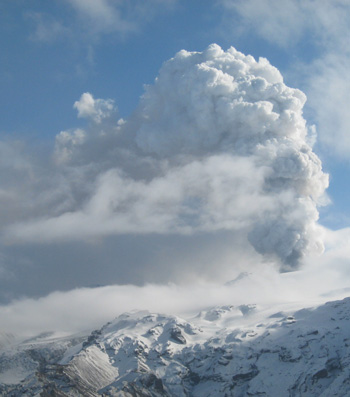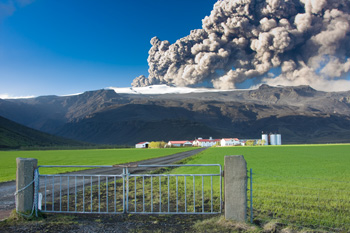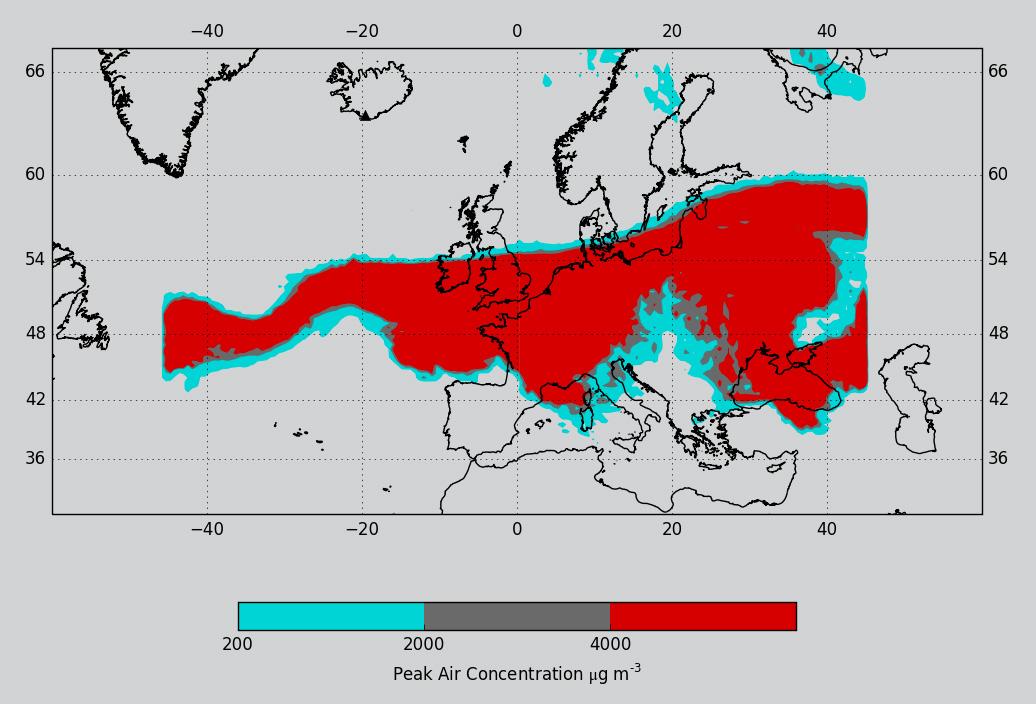Air industry response to volcanic eruptions
Eyjafjallajökull led to the greatest disruption in air traffic since World war II.
Uta Reichardt, Háskóli Íslands, Iceland
The ENHANCE project interviewed Uta Reichardt from the University of Iceland on risk management advances in the aviation industry. Watch the video to find out what recommendations she has for better risk management!
With increasing interconnectedness, a disturbance of air traffic in one part of the world can have long-ranging financial and social effects on other parts. The eruption of the Eyjafjallajökull volcano in April 2010 illustrated this memorably. The eruption prevented millions of passengers, as well as goods, from reaching their destination, as air traffic was halted in Europe for several days (Ulfarsson and Unger, 2011). It led to what is known to be the greatest disruption of air traffic since World War II and caused an estimated worldwide loss of US$5 billion with more than 100.000 flights cancelled.
Historic records suggest a volcanic eruption in Iceland approximately once every five years. Since such an event cannot be prevented from happening, cooperation and preparation are key in mitigating its impact. With the certainty of a new volcanic ash eruption at some point in the future, the question is, however, whether the aviation industry is prepared for the next eruption?
As part of the EU project ENHANCE on stakeholder partnerships, this case study has sought to obtain insights into how the European aviation sector has advanced its risk management with regard to volcanic ash since the eruption in 2010. The case study focused on the cooperation and information exchange of the stakeholders involved in the post-disaster process of reducing impact from ash outburst to the air industry.
The study has conducted expert interviews and used the method of scenario narratives and visualisation in an alternation participatory stakeholder workshop to facilitate the discussion and jointly develop improvement measures.

The multi-sector partnership
The management of volcanic ash risk to aviation is complex and requires the efforts of a number of stakeholders from different sectors. According to their position in the process, the stakeholders can be grouped into information providers, crisis coordination and network management, air navigation service providers, global/international and national regulators and aircraft operators.
An overview of the sectors, roles, and associated institutions involved in the Multi-Sector Partnership (MSP) of this case study can be found in Table 9.1. The MSP’s main aim is to prepare an aligned strategic response to volcanic eruptions, which (1) should guarantee flight safety and prevent harm to humans or machines, and (2) should minimise interruption of air traffic and thereby economic losses.
| Sector | Role | Institutions |
|---|---|---|
| Global air regulator | Development of global standards and recommended practices. | ICAO (International Civil Aviation Organisation) |
| International regulator | Limit setting for shared air transport zones | EU Directorate General for Mobility and Transport |
| National regulator | Responsible for state’s Volcanic Ash Contingency Plan, approval of Self Risk Assessment procedures, airspace closure | ICETRA (Icelandic Transport Authority) |
| Crisis coordination and network management | Coordination and planning of air traffic control in Europe | EUROCONTROL (European Organisation for the Safety of Air Navigation) |
| Information provider | Issue weather observations and forecasting. Monitoring of volcanic eruption, detection of seismic activity, ash measurements, issue warnings | IMO (Icelandic Meteorological Office) |
| Information provider | Tracks volcanic activity and issues ash distribution forecasts | London VAAC (Volcanic Ash Advisory Centre) |
| Air navigation service provider | Management of airport operations and air traffic in control area | ISAVIA (Icelandic Air Traffic Management) |
| Aircraft operators | Air transport and service providers to passengers and cargo | Icelandair (Icelandic Aircraft operator) |
Table 9.1.
The MSP - Overview of sectors, roles, and institutions.
Risk assessment and extreme-case scenarios
To evaluate the functioning of the MSP, two extreme volcanic ash scenarios were developed using expert judgement and historic data:
- One scenario describes a volcanic eruption of medium ash concentration over a long period of time (‘Eyjafjallajökull times Four scenario’) to test MSP decision-making when facing a long period of continuous risk assessment and maintenance (Figure 9.1).
- In order to assess the reactions of the stakeholders to an extreme large-scale severe interruption of air traffic, a second scenario contains a volcanic eruption with a large ash emission but in a rather short period of time ('Öræfajökull scenarió', Figure 9.2).
Although the uncertainties are considered too large to perform a detailed economic risk assessment, the financial consequences in both scenarios are expected to be in the order of billions of euros.

Figure 9.1.
Eyjafjallajökull scenario. Example of modelled ash distribution for one of the eruptions in the scenario, at day 5 after the eruption. While high ash concentrations slowly decrease, a broad band of air with low ash concentration between 200 – 2000 μg/m3 is forecasted 5 days into the eruption up to flight level 200 (denotes 20,000 feet).
Figure 9.2.
Öræfajökull scenario. Example of modelled ash distribution, at day 5 after the eruption. High ash concentrations of more than 4000 μg/m3 are predominant throughout the whole forecast period up to flight level 200 (denotes 20,000 feet).
To gain insight into the stakeholder partnership’s reaction to the scenarios, the stakeholders were invited to participate in a workshop to meet face-to-face and work through the scenarios. The scenarios were presented as a narrative in fictitious newspaper articles to support the group in imagining the real-life event and to discuss real-life implications.






